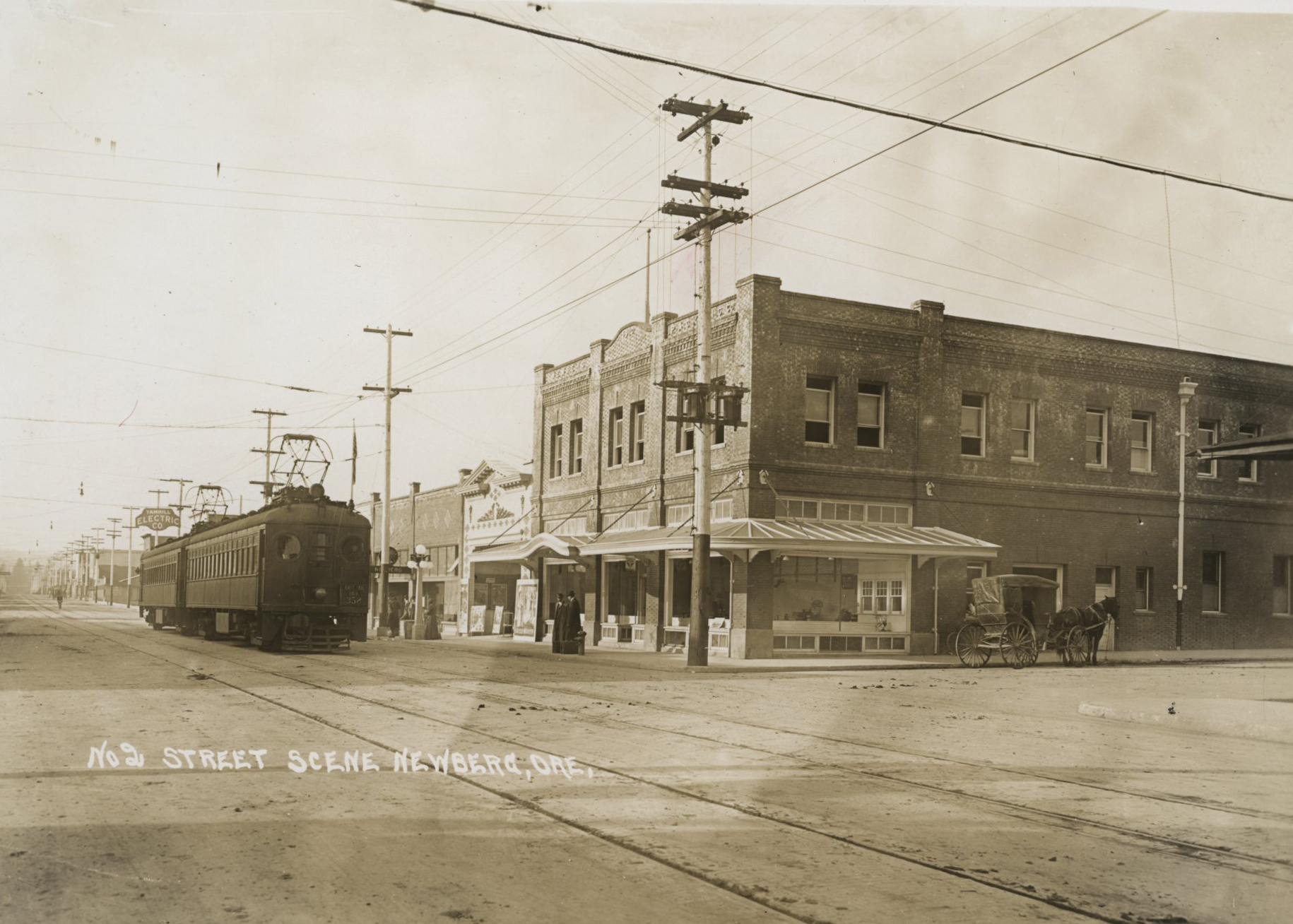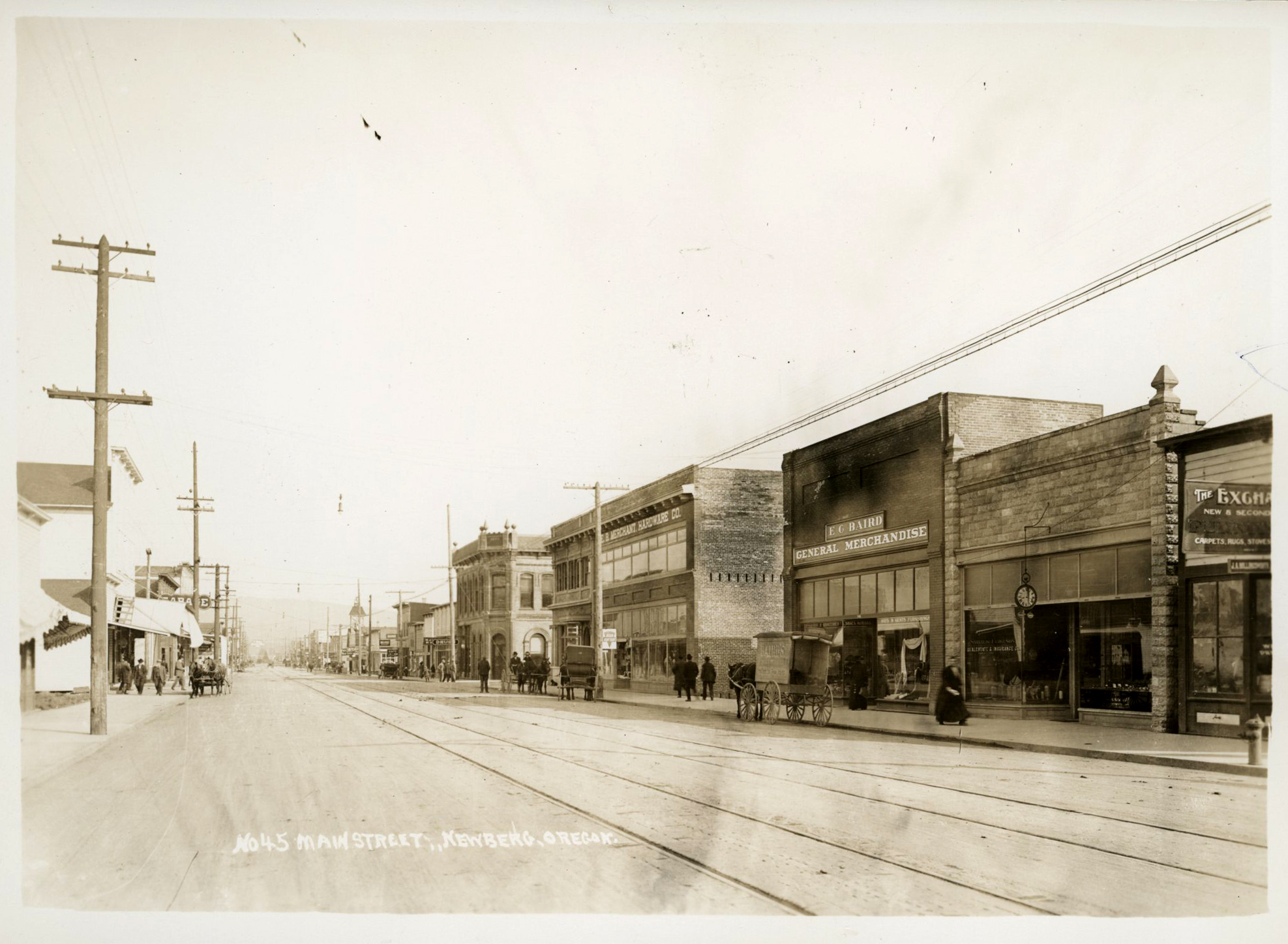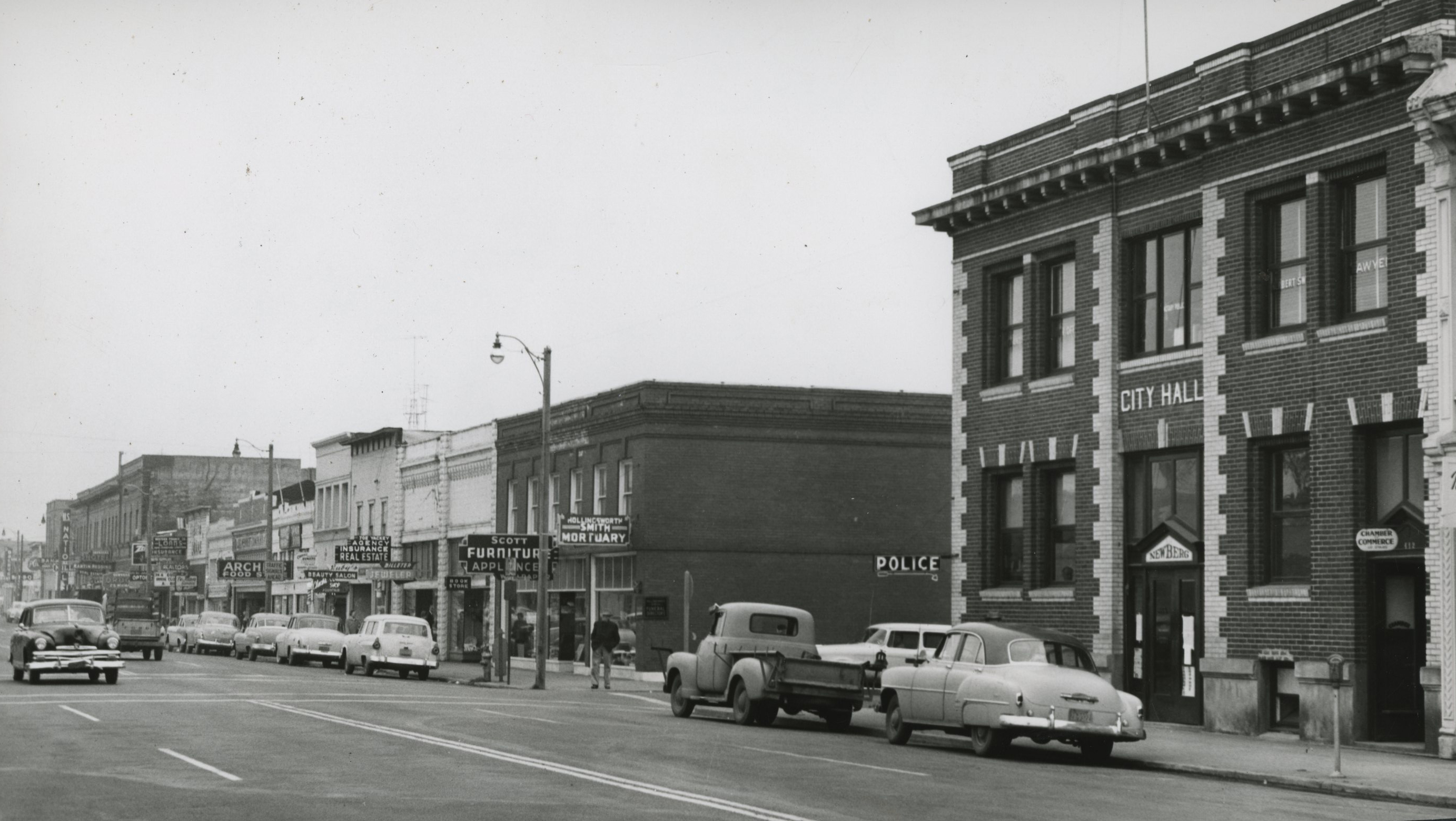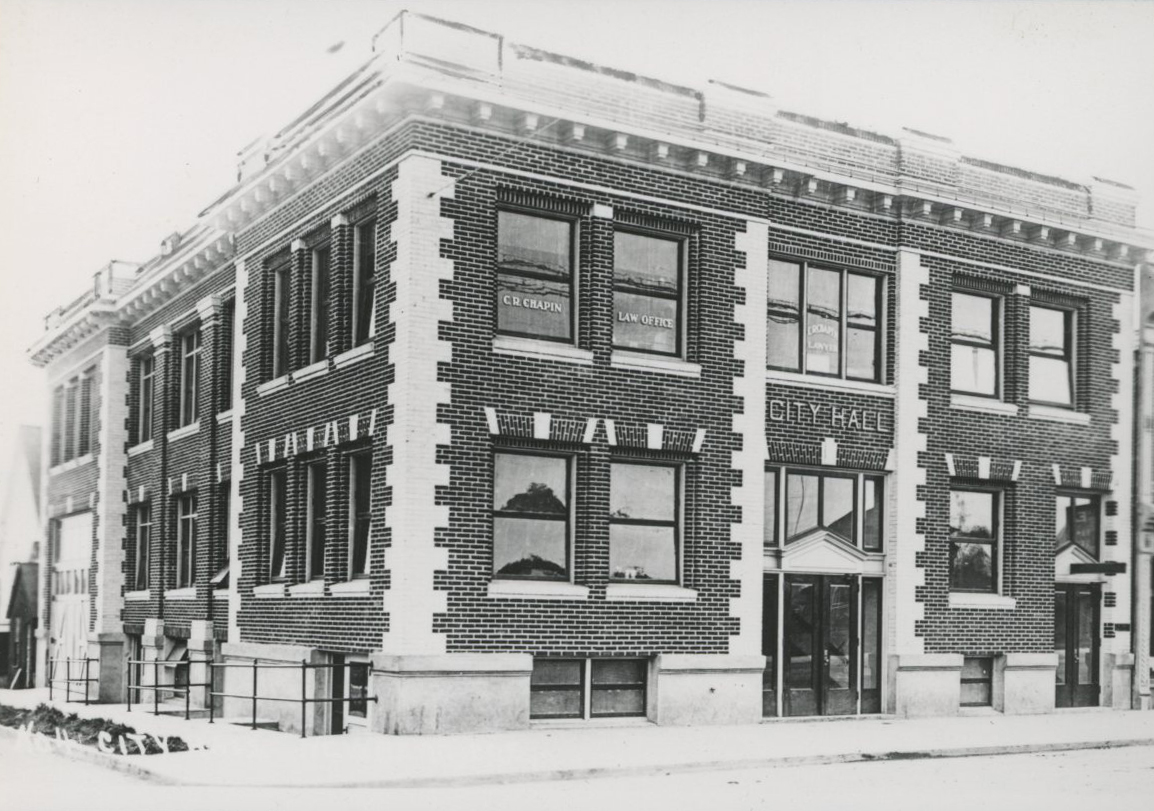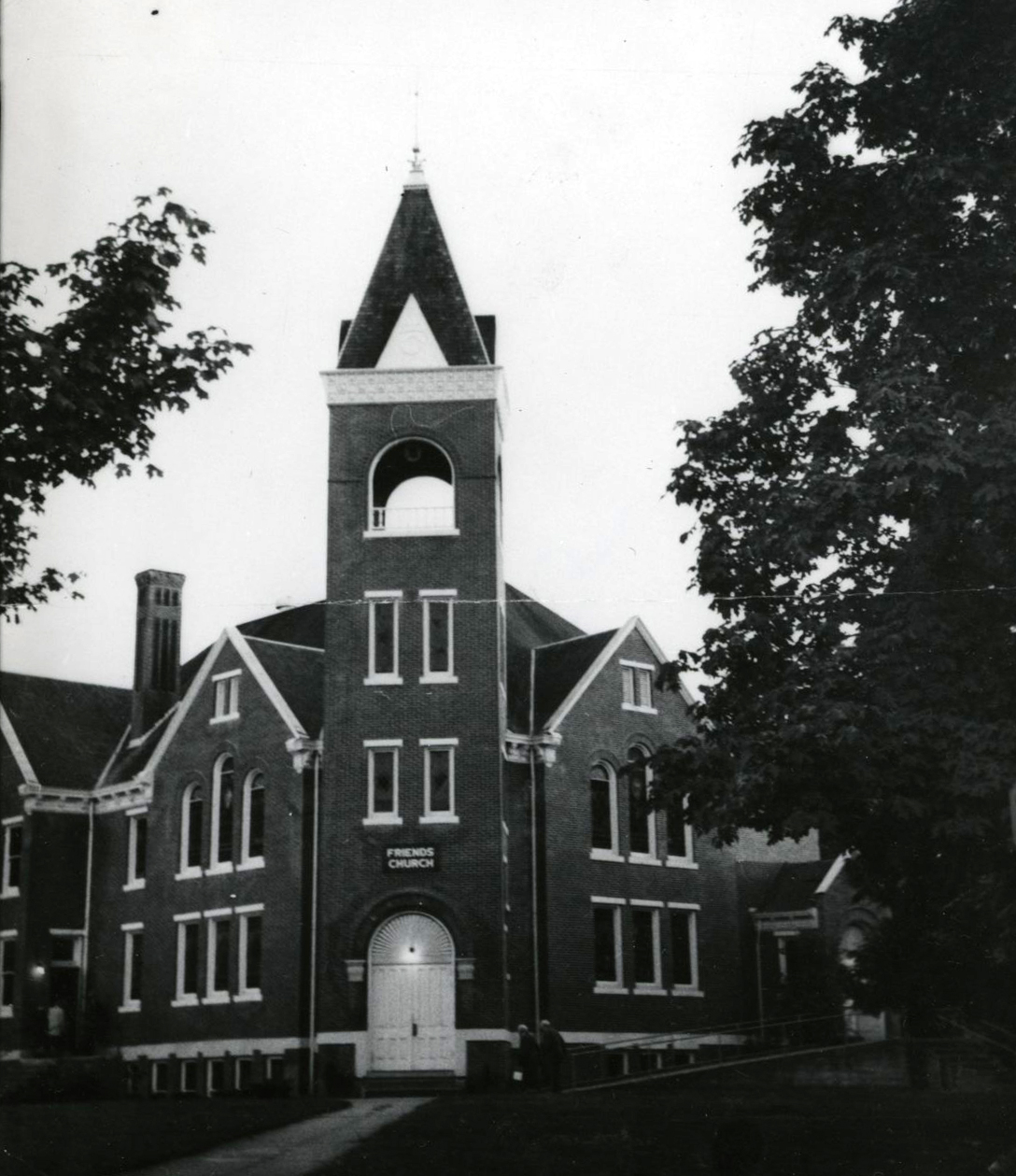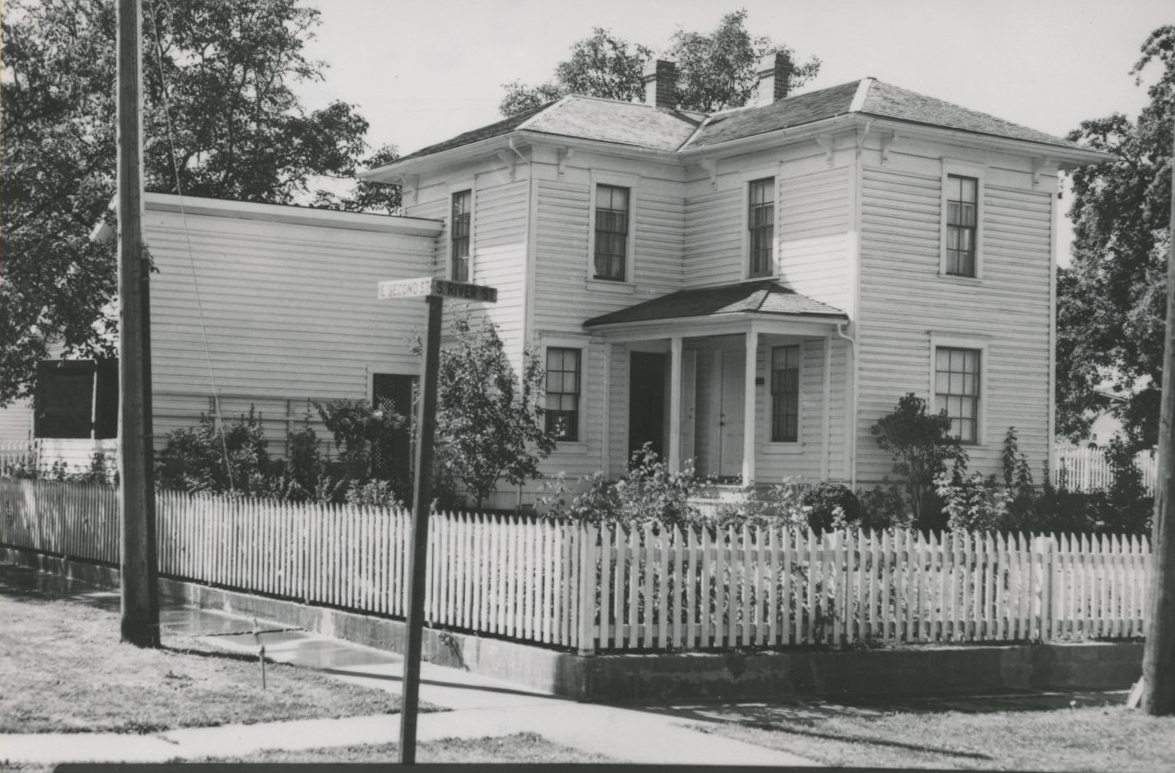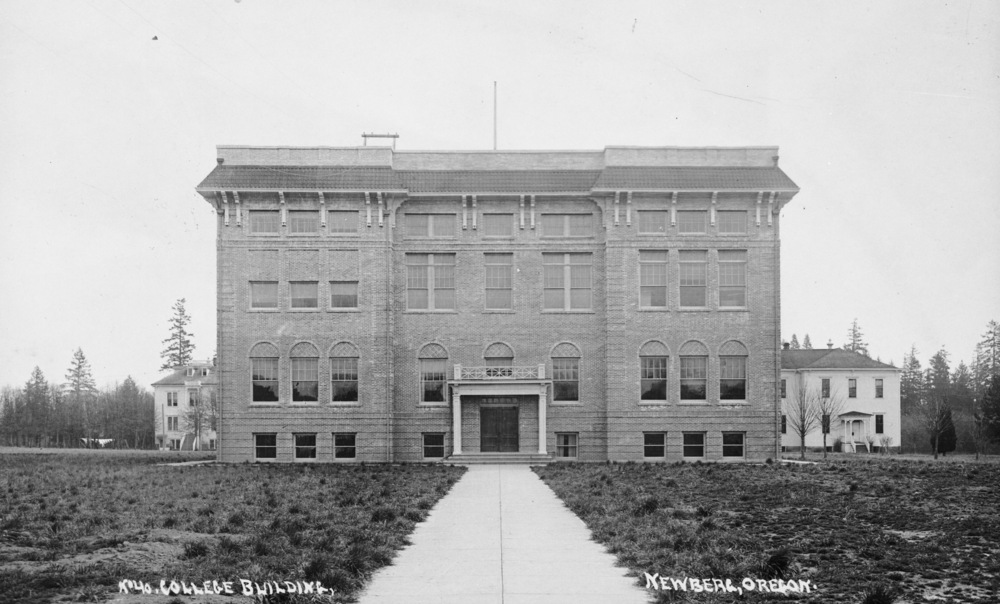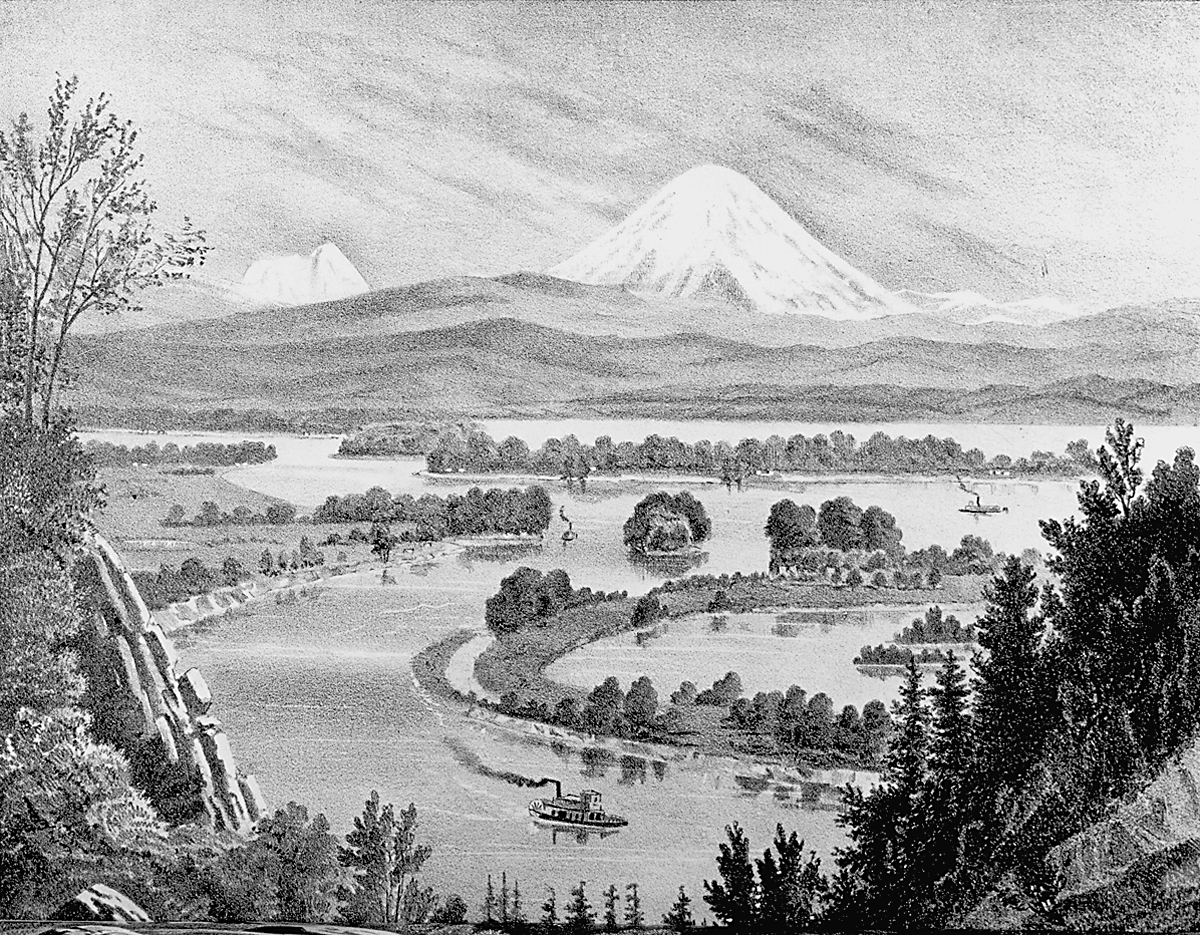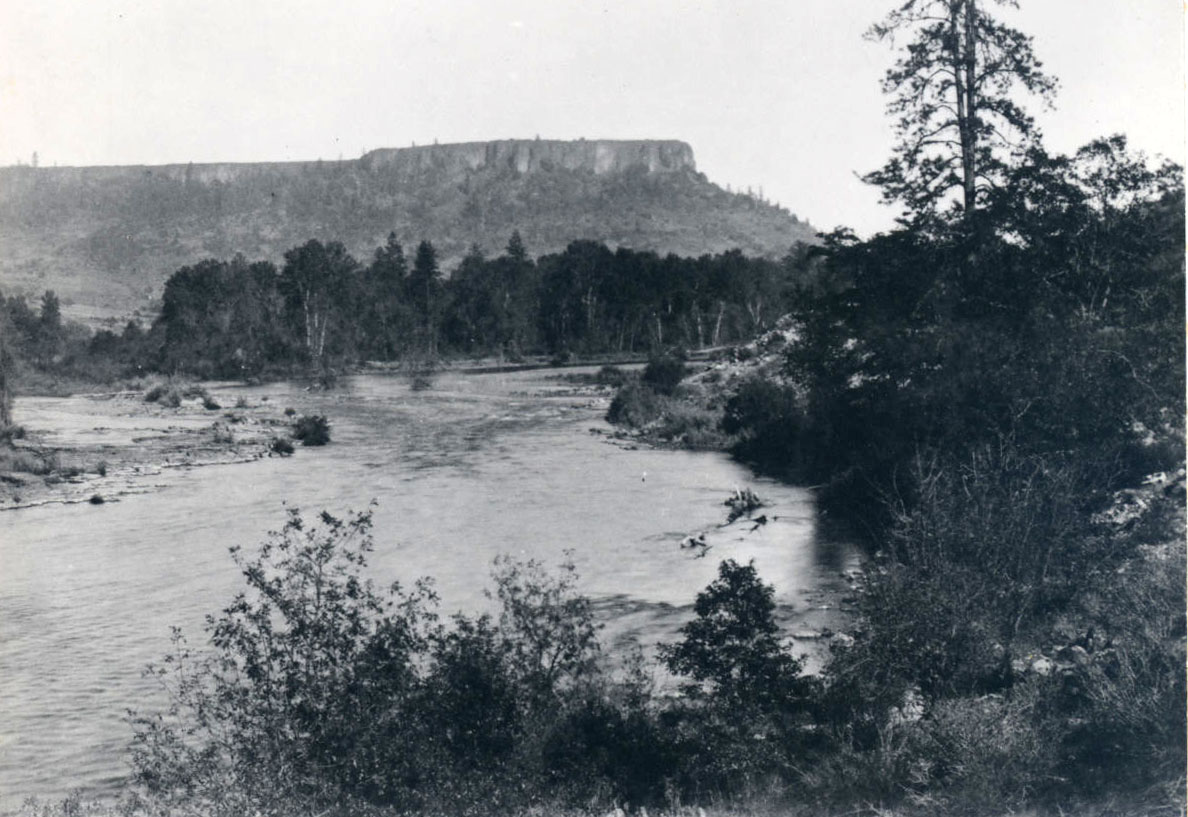Newberg, the second largest city in Yamhill County, is located about a mile north of a northerly bend in the Willamette River. The city is located in the eastern part of the county, about twenty-three miles southwest of Portland and fourteen miles northeast of McMinnville. The development of Newberg illustrates the growth of the Willamette Valley as an agricultural region in the nineteenth century and the expansion of Portland’s economic reach in the twentieth century.
For hundreds of years, the area that became Newberg was occupied by Yamhela, part of the Kalapooian peoples who occupied the upper Willamette Valley. Decimated by disease and the disruption of their traditional economy, surviving members were removed to the Grand Ronde Reservation in 1857 and became part of the Confederated Tribes of the Grand Ronde. Early EuroAmerican arrivals to the area included Ewing Young in 1835 and Joseph Rogers in 1848. A small, early settlement along the Willamette River, in what is now Newberg, was known as Rogers Landing (commemorated by Rogers Landing County Park). Newberg was named in 1869 by postmaster Sebastian Brutscher, after his home in Neuburg an der Donau, Germany.
In 1876, William Hobson, a Quaker from Iowa, sought a good location for other members of the Society of Friends who wanted to settle in the Far West. After traveling through Oregon and California, he reached Chehalem Mountain, where he looked south toward the Willamette River and felt that his search had ended. “I have been impressed,” he wrote, “that some settlements of Friends ought to be formed in these parts for the good of the race of mankind….For it is broken off twice by the mountains and large hills; and…by the scattering old fir trees, many of which have reared their heads above one hundred and fifty feet.”
Hobson organized the Newberg Monthly Meeting of Friends in October 1875, gathering first in homes and then in a meetinghouse in 1878. The small community attracted other members of the Religious Society of Friends, most of them from Iowa and Indiana. They established Friends Pacific Academy in 1885 and added Pacific College in 1891. One of the college’s first students was Herbert Hoover. Orphaned in Iowa, the future president arrived in Newberg in 1885 at age eleven to live with his uncle, Dr. Henry J. Minthorn. He lived there for three years until the Minthorn family moved to Salem. Pacific College was renamed George Fox College in 1949 (George Fox University in 1996); the school had 2,931 students in 2015.
Jesse Edwards, a leading businessman and Quaker, set Newberg’s street pattern and is sometimes credited as the founder of the city. The older part of the town had been close to the river, but the new plat was farther north and closer to the Southern Pacific narrow-gauge railroad. Newberg incorporated as a town in 1889 and as a city in 1893. The population grew rapidly, from 514 in 1890 to 2,260 in 1910, and the city served as the commercial center for the Chehalem Valley and eastern Yamhill County, where orchards were expanding.
Newberg had several brick manufacturers, including the Pacific Face Brick Company and the Newberg Pressed Brick and Terra Cotta Company (founded in 1893), whose products were used extensively in Newberg and Portland. The town’s first newspaper, the Newberg Graphic, published its first issue in 1888; it is now published weekly by the Pamplin Newspaper Group.
Growth slowed from 1910 to 1940, although the Red Electrics of the Southern Pacific Railroad provided passenger service to Corvallis by way of McMinnville and to Portland by way of Sherwood, Tualatin, and Oswego. World War II brought an uptick in the local economy, while the 1950s was another slow decade. The city has grown steadily since 1960, as Newberg’s economic connections with Portland strengthened and increasing numbers of residents work in Portland and its close-in suburbs. In 1983, when 18 percent of Yamhill County workers commuted to jobs in Washington, Multnomah, or Clackamas Counties, the federal government recognized this economic connection by adding the county to the Portland Metropolitan Statistical Area. In 2020, the city had an estimated population of 25,138.
In a reflection of its Quaker character, Newberg was a dry town, voting to ban liquor sales early in its municipal history. Prohibition continued in the town until a 1,022-to-844 vote in 1966 made liquor sales legal. The local Quaker influence was also evident in 1964, when Newberg voted strongly with the majority to abolish capital punishment in Oregon.
Newberg is considered a gateway to Willamette Valley wineries and is convenient to the Ribbon Ridge, Chehalem Mountain, and Dundee Hills American Vinticultural Areas, which have attracted high-end tourism facilities such as the Allison Hotel and Spa. The city is also home to A-dec, which each year since 2003 has been judged the world’s best manufacturer of dental equipment, furniture, lights, and delivery systems. Founded in 1964, the company employed over nine hundred people in 2016.
-
![Illustration in West Short Magazine]()
Newberg, Chehalem Valley, 1888.
Illustration in West Short Magazine Courtesy Oregon Hist. Soc. Research Lib., Orhi35543
-
![]()
Southern Pacific Red Electric train in downtown Newberg.
Courtesy Oregon Hist. Soc. Research Lib. 27623
-
![]()
Early photo of Main St., Newberg.
Courtesy Oregon Hist. Soc. Research Lib., 66563
-
![]()
Main St., Newberg, 1956.
Courtesy Oregon Hist. Soc. Research Lib., Orhi87685
-
![]()
Jesse Edwards.
Courtesy Oregon Hist. Soc. Research Lib., 006308
-
![]()
Newberg City Hall.
Courtesy Oregon Hist. Soc. Research Lib., 009408
-
![]()
Friends Church, 1957 (built 1893).
Courtesy Oregon Hist. Soc. Research Lib., 000555
-
![]()
George Fox College (now University).
Courtesy Oregon Hist. Soc. Research Lib., 005429
-
![]()
Hoover-Minthorn House, Newberg, 1955.
Courtesy Oregon Hist. Soc. Research Lib., 005993
Related Entries
-
![A-dec (Austin Dental Equipment Co.)]()
A-dec (Austin Dental Equipment Co.)
A-dec is one of the world’s largest manufacturers of dental equipment. …
-
![George Fox University]()
George Fox University
George Fox University’s roots reach to 1885 and the founding in what is…
-
Herbert Hoover in Oregon
Herbert Hoover, the thirty-first president of the United States, spent …
-
![Quakers in Oregon]()
Quakers in Oregon
Quakerism as a religious denomination came to Oregon in the 1870s, when…
-
Willamette River
The Willamette River and its extensive drainage basin lie in the greate…
-
![Willamette Valley Treaties]()
Willamette Valley Treaties
From 1848 to 1855, the United States made several treaties with the tri…
Related Historical Records
Map This on the Oregon History WayFinder
The Oregon History Wayfinder is an interactive map that identifies significant places, people, and events in Oregon history.
Further Reading
Beebe, Ralph K. A garden of the Lord: a history of Oregon Yearly Meeting of Friends Church. Barclay Press, 1968.
Chamberlin, Homer. Homer on the Grange. West Linn, Ore.: Thistlefield Press, 1987.


